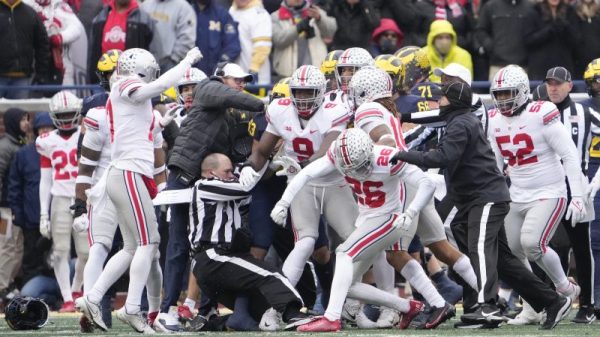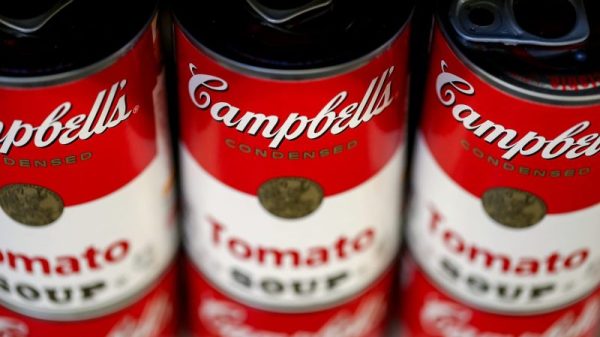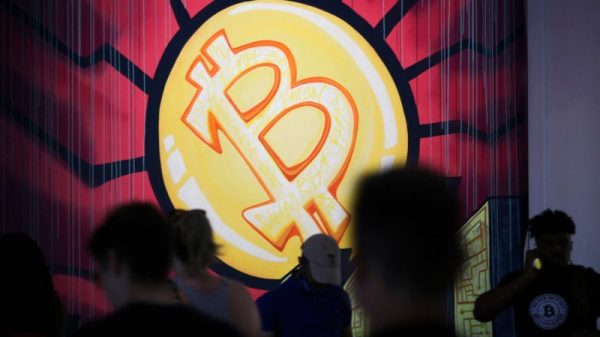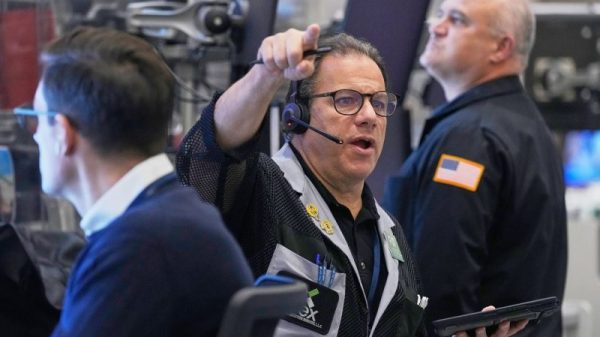Consumer prices climbed 4.9% in April — the first time annual inflation has landed below 5% in two years.
On a monthly basis, the inflation rate rose 0.4%, which was higher than the 0.1% in March.
The latest report from the Bureau of Labor Statistics showed other favorable trends: Food prices climbed just 7.7% over the 12-month period — the eighth-straight month of slower price growth. And on a monthly basis, food prices actually declined.
Stock futures jumped following the report.
Still, the ‘core’ inflation reading for April, which excludes volatile food and energy prices, increased 5.5% on the year. That was in line with economists’ expectations.
In a note to clients after the release of Wednesday morning’s report, Seema Shah, chief global strategist with Principal Asset Management financial group, said the latest data showed earlier concerns about a ‘hot’ inflation report for April proved ‘unfounded.’ She noted that a measure of prices within service categories now shows ‘clear deceleration.’
‘In light of the strong April jobs report, the [Federal Reserve] will be comforted by the number and it reinforces its policy slant towards a pause’ in interest rate hikes, she wrote.
Inflation is slowing, but remains well above the Federal Reserve’s 2% goal
The Fed’s stated goal of returning the economy to a 2% inflation rate is still in play. Despite the progress shown in Wednesday’s report, there will likely be many more months before the central bank reaches that goal.
‘We’re in a robust demand environment,” Neil Dutta, the head of economic research at Renaissance Macro Research group, said in an interview. “And one reason for that is that labor markets are very tight” — meaning demand for workers exceeds the supply of available ones.
Indeed, the most recent jobs data showed the unemployment rate fell back to its post-pandemic low of 3.4%.
“We have an overheated economy,” Dutta said.
Included with that ‘tight’ labor market: ongoing wage increases. Data from the Bureau of Labor Statistics shows average hourly earnings have increased by 4.4% over the 12 months through April. It’s good news on paper, but paying workers more money usually means employers will raise prices on goods and services, which ultimately gets passed down to consumers.
Rising wages are one reason economists at Bank of America told clients last week they predict ongoing increases in the cost of dining out. Last week, the BLS reported leisure and hospitality earnings increased by 5.7% year over year for April.
Grocery costs have also shown ongoing significant increases, as food companies like PepsiCo, Nestle and Unilever said in their most recent earnings reports that they have continued to raise prices.
Economists at Bank of America say more ‘demand destruction’ is needed — meaning consumers pull back on their spending even after prices have fallen — to dramatically reduce inflation.
That is all despite the Federal Reserve’s having hiked its key federal funds rate for 10 straight meetings to the highest level in 16 years. By raising interest rates, the Fed hopes to make it more expensive to borrow and invest and thereby curb demand for goods and services.
But the U.S. economy is a massive machine, so it takes time for those interest rate hikes to meaningfully slow things down. At his news conference last week, Fed Chair Jerome Powell didn’t explicitly rule out additional rate hikes at the central bank’s meetings this summer. Powell also tamped down any expectations of a rate cut this year, saying it is “not in our forecast.”
A wild card and a silver lining
One category is largely out of the Fed’s control: gas prices. Thanks to a production cut by OPEC, they ticked higher last month.
But the overall effect has been a persistently inflationary environment that continues to bedevil the economy.
‘Unfortunately, it has been like watching the financial equivalent of a car wreck,’ Mark Hamrick, a Bankrate economic analyst, said in a note Monday. ‘Between the spikes in gasoline, food and shelter prices, there has been no shortage of sources of aggravation associated with inflation for many months now. This tension is easing but hasn’t gone away.”
Despite growing worries about the well-being of American households, recent data shows savings rates have increased for two straight quarters, while a survey Monday found consumers’ perceptions about their current financial situations actually improved in April.
That may translate into ongoing demand — and price increases.
‘The job market and inflation continue to show an economy where demand outstrips supply and inflation is persistently elevated,’ Citigroup economists wrote in a note to clients Monday. Wednesday’s inflation report, they said, is likely to ‘call into question the extent to which underlying inflation has slowed.’



























